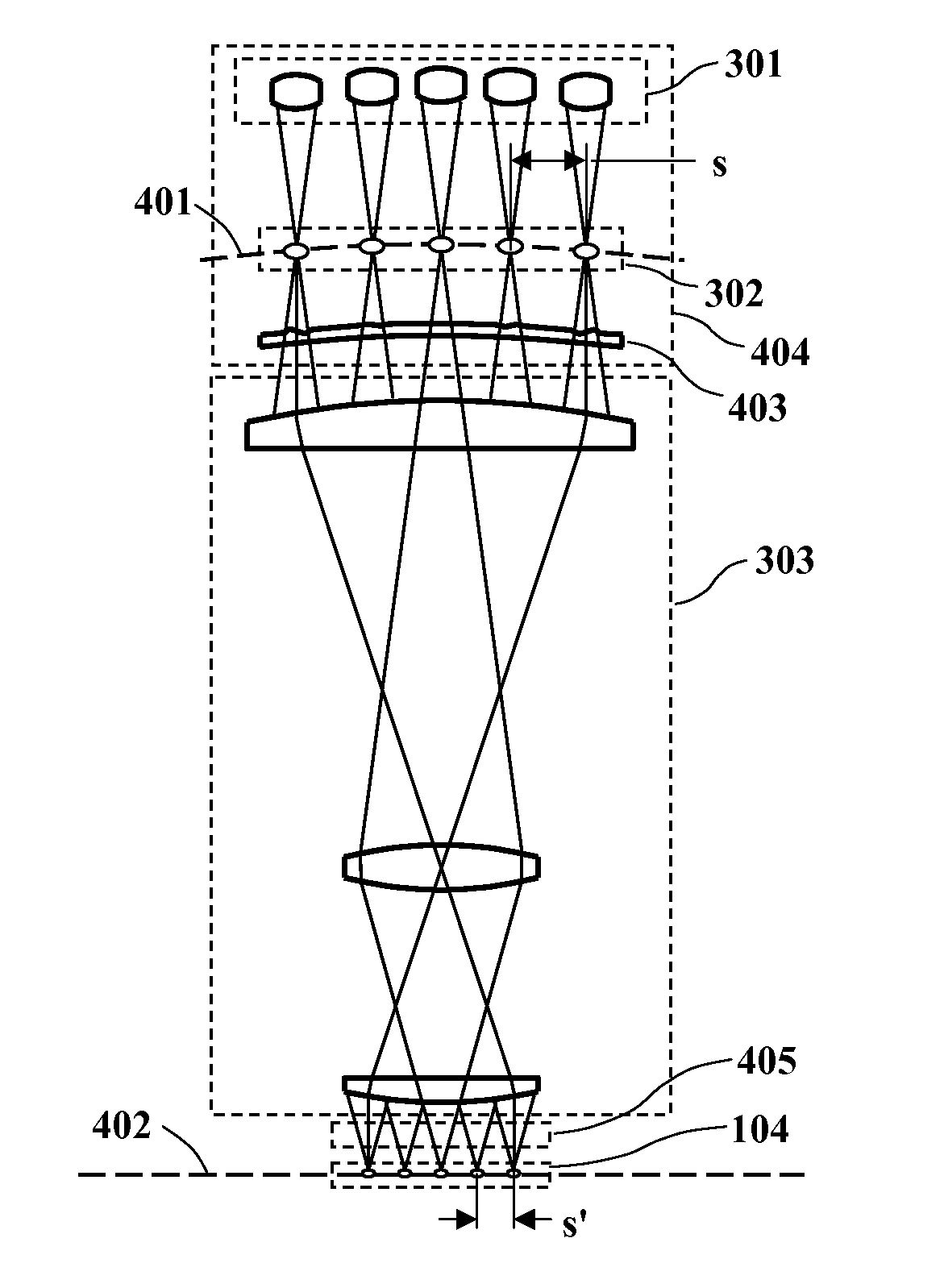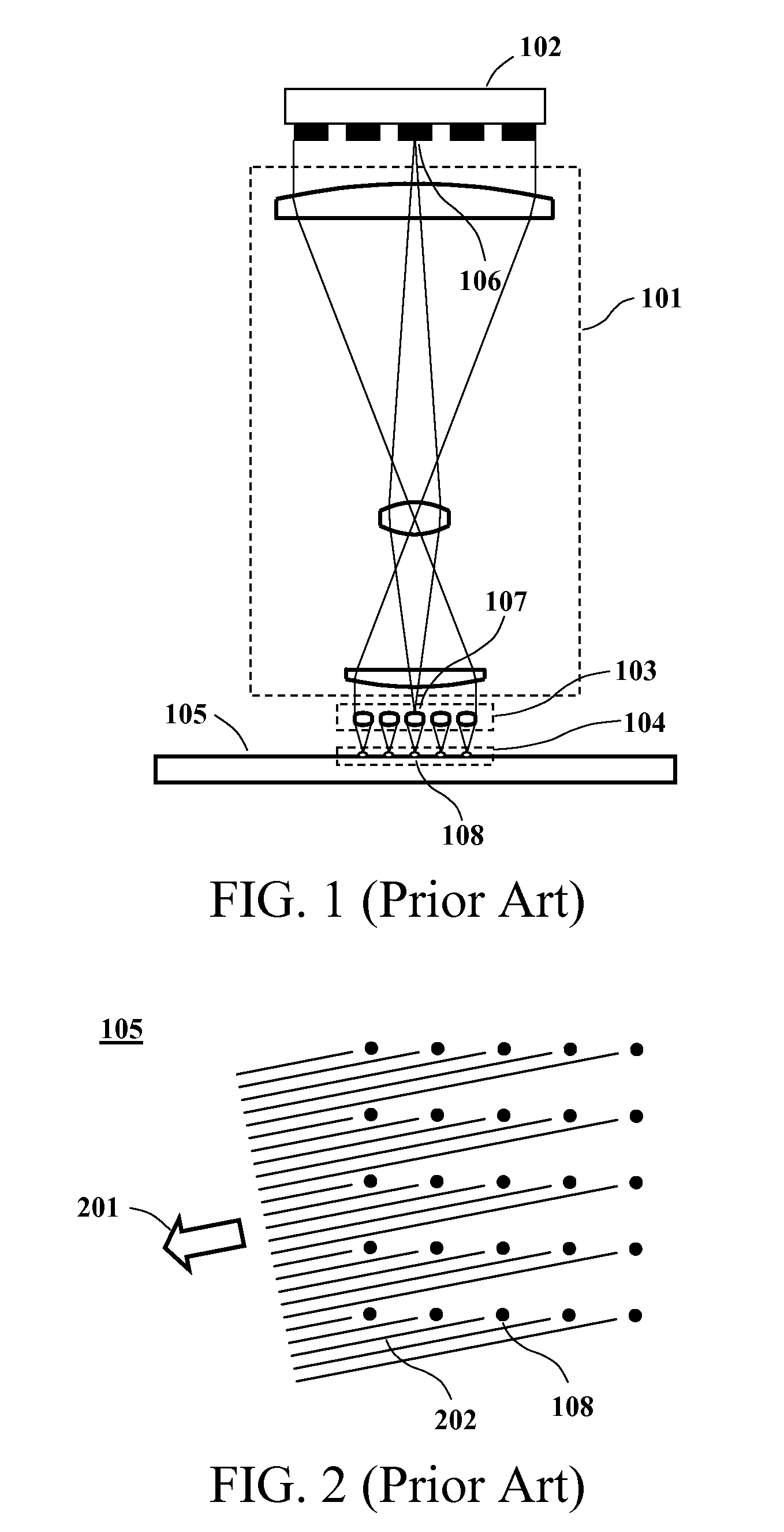Spot-array imaging system for maskless lithography and parallel confocal microscopy
a technology of confocal microscopy and imaging system, which is applied in the direction of material analysis through optical means, instruments, photomechanical equipment, etc., can solve the problem that the projection lens cannot achieve stringent optical aberration tolerances, and achieve optimal radiation intensity and polarization control, optimal correction of system point-imaging performance for each individual
- Summary
- Abstract
- Description
- Claims
- Application Information
AI Technical Summary
Benefits of technology
Problems solved by technology
Method used
Image
Examples
embodiment
EUV Embodiment
[0095]FIGS. 1, 3 and 4 illustrate the projection lens schematically as a dioptric (refractive) system, but it could more generally comprise a catoptric (reflective) or catadioptric (refractive and reflective) system. (The term “lens” is used generically to denote refractive and / or reflective imaging systems.) In particular, the invention would be applicable to extreme ultraviolet (EUV) lithography systems in which the projection optics consist only of mirrors. FIG. 15 illustrates a possible design configuration for EUV spot-generation optics, in cross-section. This particular embodiment could operate at a wavelength of 13.5 nm.
[0096]The EUV microlenses are molybdenum (Mo) zone-plate lenses such as lens 1501, shown in cross-section in FIG. 15 and in plan view in FIG. 16 or FIG. 17. The lenses are supported on a thin silicon (Si) substrate 1502, which is formed on top of a microchannel plate 1503. The lens form for this embodiment is illustrated in FIG. 16. Alternatively...
PUM
 Login to View More
Login to View More Abstract
Description
Claims
Application Information
 Login to View More
Login to View More - R&D
- Intellectual Property
- Life Sciences
- Materials
- Tech Scout
- Unparalleled Data Quality
- Higher Quality Content
- 60% Fewer Hallucinations
Browse by: Latest US Patents, China's latest patents, Technical Efficacy Thesaurus, Application Domain, Technology Topic, Popular Technical Reports.
© 2025 PatSnap. All rights reserved.Legal|Privacy policy|Modern Slavery Act Transparency Statement|Sitemap|About US| Contact US: help@patsnap.com



